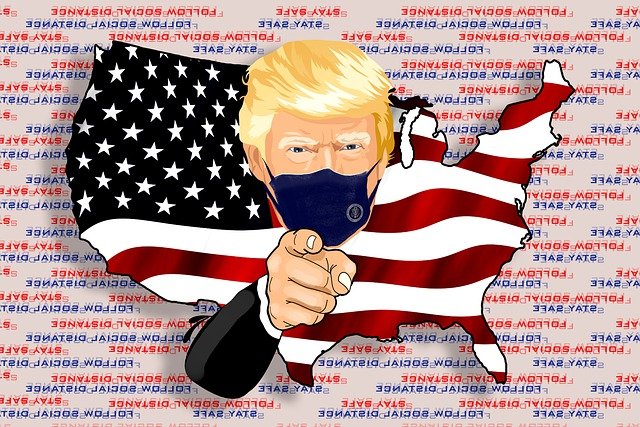
Image by Color Shadows from Pixabay
White House doctor Sean Conley relayed information about President Donald Trump’s health to the media while he was under treatment for Covid-19. Observers say Conley’s public relations skills also need treatment. Paine Publishing named Conley its Measurement Menace of the Month.
He evaded questions from the media, gave confusing and misleading comments, and downplayed the seriousness of the president’s health. PR and media pundits agreed that his elusive, questionable responses increased distrust and ultimately heightened fears about the president’s health.
“Sadly, the result is that the President’s hospital, Walter Reed Medical Center, appears at best clueless and at worse to be colluding with the White House press office to hide information on the President’s health from the American public,” states Katie Paine, a PR measurement and CEO of Paine Publishing.
Doing Much Better?
The day after Trump entered the hospital, Conley said he was “doing much better.” A couple of days later, he said Trump was about to be discharged and was ready to return to the White House. “To hear Conley tell it, Trump was also never gone. The story of his illness jumped from ‘nothing to see here’ to ‘mission accomplished,'” writes James Hamblin, a staff writer at The Atlantic and a lecturer at Yale School of Public Health.
Conley changed his story. He said Trump was not on supplemental oxygen and then avoided questions on the topic. The next day he said Trump had received supplemental oxygen twice.
The doctor said he was trying to reflect an upbeat attitude. “I didn’t want to give any information that might steer the course of illness in another direction, and in doing so it came off that we were trying to hide something, which wasn’t necessarily true,” he told the media.
At one press conference, he said Trump was doing well. Within an hour, “a source familiar with the President’s health” told the media that Trump’s vitals were “very concerning” and that his recovery was not assured.
A Lack of Straight Answers
Even while claiming he was doing fine, Conley revealed that Trump was on dexamethasone. The drug is reserved for patients in severe or critical condition. Media commentators concluded that he was not being forthright.
“The job of a physician is not to reflect an upbeat attitude,” Hamblin says. “It is not to conflate optimism with obfuscation. The job of a physician is to deal in reality—to neither minimize threats nor overemphasize them.”
“Instead, Conley has opted for complicity, becoming a mouthpiece for Trump’s show of personal strength,” he adds.
While Conley violated the PR guidelines for transparency and truthfulness, he was likely instructed by Trump to promote an upbeat attitude and not reveal the true severity of the president’s health condition. The doctor came perilously close to stating “no comment,” a media relations faux paus, while rejecting media questions. At one point he cited HIPPA regulations for declining to answer questions about the president’s health.
Bottom Line: White House doctor Sean Conley drew criticism from media analysts and PR experts for his media relations performance during President Trump’s treatment for Covid-19. Evasive, contradictory responses to media questions raised suspicions about his truthfulness and transparency.
Schedule a Free Online Demo of the Glean.info Media Monitoring & Measurement Dashboard

Michael Kling is manager of public relations, marketing and social media at Glean.info, a media monitoring and measurement service that provides customized media monitoring and PR analytics solutions.





Your column brings up points that should be taught to PR students in every communication’s school, hedging about a situation results in mistrust by the media. But it also shows what’s wrong with having a military doctor treat the president: It results in lies.
One of the problems of having a military physician treat a president is that they are in the military and have to follow the orders of their superior, who is the president of the United States. Civilian doctors also would have to withhold information that a president doesn’t want released, but a civilian MD wouldn’t have had to salute and sanction a photo op, like having Trump take a car ride, while still in the hospital or put a positive spin on a medical situation as did Dr. Conley, a Commander in the U.S. Navy. Civilian doctors would have the ability of saying, “My way or the highway,” without fear of being court-martialed
or having their military careers derailed because of insubordination.